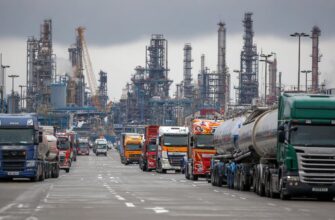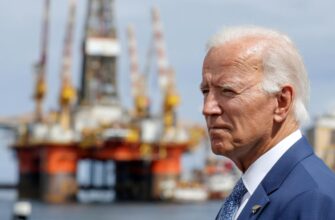A dramatic collision between two massive ships in the North Sea near England’s coast has left authorities scrambling and raised serious questions about maritime safety and environmental risks. On March 10, 2025, a tanker carrying jet fuel and a cargo ship loaded with hazardous chemicals crashed into each other, sparking fires on both vessels and sending emergency teams racing to the scene. The incident, just off the shores of East Yorkshire, has gripped the attention of locals, travelers, and environmentalists alike. In this article, journalists from TheMors unpack the details of this North Sea tanker collision, its immediate fallout, and what it could mean moving forward. Whether you’re tracking shipping news or worried about the environment, here’s what you need to know.
What Went Down in the North Sea?
The collision happened around 9:48 a.m. local time on March 10, about 20 miles off England’s east coast near Kingston-upon-Hull and Grimsby. The ships involved were the Stena Immaculate, a U.S.-flagged tanker hauling aviation fuel, and the Solong, a Portuguese-flagged cargo vessel carrying a mix of goods, including 15 containers of sodium cyanide—a toxic chemical that’s dangerous if it leaks. The Stena Immaculate was anchored when the Solong, moving at around 16 knots, slammed into it. Within minutes, explosions rocked the tanker, and both ships caught fire.
Eyewitness accounts from crew members paint a chaotic picture. One sailor on the Stena Immaculate told reporters they barely had time to think—after the crash, flames erupted, and the team rushed to lifeboats. All 37 crew members from both ships were rescued, though one person from the Solong remains missing as of March 12. Emergency response was swift, with the UK Coastguard deploying helicopters, rescue boats, and nearby vessels equipped to fight fires. By Tuesday, the blaze on the Stena Immaculate was mostly out, but the Solong was still burning, complicating efforts to assess the damage.
Why Did This Tanker Collision Happen?
Investigators are still piecing together what caused this North Sea crash, but early reports point to a few possibilities. The Solong was underway, while the Stena Immaculate sat stationary—suggesting the cargo ship failed to avoid the anchored tanker. Some experts, like Martin Boyers from the Grimsby-East port authority, speculate the Solong might have been on autopilot with no one actively steering. Others wonder if weather, visibility, or mechanical issues played a role, though conditions that day weren’t unusually rough.
The UK police took a significant step on March 11, arresting the Solong’s 59-year-old captain on suspicion of manslaughter by gross negligence. This move hints that human error could be a factor, but officials haven’t released more details yet. Maritime safety firm Ambrey told Sky News that a full investigation might take weeks or even months. For now, there’s no solid evidence of foul play, despite some whispers online about sabotage. What’s clear is that this collision near England has sparked a hard look at how ships navigate busy waters like the North Sea.
The Immediate Fallout: Fires, Fuel, and Fears
Damage to the Ships
The impact tore open a fuel tank on the Stena Immaculate, spilling Jet A-1 aviation fuel into the sea. The explosions that followed set both vessels ablaze, with thick black smoke visible from shore. Crowley, the company operating the tanker, confirmed the breach but hasn’t said how much fuel leaked. The Solong’s cargo—especially the sodium cyanide—adds another layer of concern. While the ship’s owner, Ernst Russ, claims those containers were empty at the time, the fire’s heat could still pose risks if any residue remains.
As of March 12, the tanker’s fire is under control, but the Solong continues to burn. Salvage teams are working around the clock, but the ongoing blaze makes it tough to board and inspect the damage fully. Photos circulating on X show the charred hulls bobbing in the water, a stark reminder of the incident’s severity.
Environmental Risks in the North Sea
Anytime fuel spills into the ocean, alarm bells ring—and this tanker collision near England is no exception. Jet A-1 is lighter than crude oil, so it evaporates faster, but it can still harm marine life if it spreads. The UK government says there’s no major pollution yet, but they’re watching closely. The sodium cyanide on the Solong is the bigger worry—if it leaks, it’s deadly to fish and could disrupt the North Sea ecosystem for years. Thankfully, early tests haven’t found traces of it in the water, but the situation remains fluid.
Environmental groups are pushing for quick action. Cleanup crews are on standby, and the Coastguard is monitoring for oil slicks. Past spills, like the 1989 Exxon Valdez disaster, show how fast things can spiral—though this incident is smaller, the stakes are still high.
How It Affected People and Travel
The North Sea is a busy shipping lane, and this crash threw a wrench into operations. Ports like Grimsby and Hull didn’t shut down, but some vessels rerouted to avoid the area. For travelers, the bigger headache was the ripple effect—airlines relying on Jet A-1 faced potential supply hiccups, though no major flight delays were reported by March 12. Locals in East Yorkshire watched the drama unfold from shore, with some sharing videos of the smoke plume online.
Businesses tied to shipping took a hit too. Delays in cargo movement—especially if the Solong’s goods were headed to Rotterdam, as MarineTraffic data suggests—could mean lost revenue for companies along the supply chain. For now, the focus is on containment, but the economic fallout might linger.
What’s Next After the Collision?
Investigation and Accountability
The UK’s Marine Accident Investigation Branch is digging into the crash, collecting data from black boxes, crew statements, and radar logs. Was it a navigation mistake? A tech failure? Or something else? Answers won’t come fast—experts say it could be months before a final report drops. The captain’s arrest adds pressure to find out who’s responsible, and legal battles might follow if negligence is proven.
Crowley and Ernst Russ, the companies behind the ships, are cooperating but staying tight-lipped. If the spill worsens, they could face fines or lawsuits from environmental agencies or affected businesses. This isn’t just about one incident—it’s a wake-up call for tighter rules in the North Sea.
Lessons for Maritime Safety
Collisions like this don’t happen every day, but they’re not unheard of either. The North Sea’s heavy traffic—tankers, cargo ships, fishing boats—means risks are always there. This crash near England could push regulators to rethink safety measures. Should anchored ships have better warning systems? Are crews trained enough for emergencies? Posts on X suggest some think autopilot reliance is a growing problem—maybe it’s time for a closer look.
For anyone sailing these waters, the takeaway is clear: stay sharp. The sea doesn’t forgive mistakes, and this incident proves it.
How to Stay Safe and Informed
If you’re traveling or working near the North Sea, keep an eye on updates. Here’s what you can do:
- Follow Shipping Alerts: Check sites like MarineTraffic for real-time ship movements.
- Plan for Delays: If you’re flying or shipping goods, build in extra time.
- Know the Risks: Spills could affect fishing or tourism—stay tuned to local news.
TheMors journalists are tracking this story as it unfolds, pulling from sources like BBC, Reuters, and Sky News to keep you in the loop. We’ve sifted through reports and social media chatter to bring you a clear, no-nonsense picture.
Wrapping Up the North Sea Tanker Collision
The tanker collision in the North Sea near England on March 10, 2025, was a messy, fiery wake-up call. Two ships—one packed with fuel, the other with toxic cargo—crashed, burned, and left a trail of questions. The quick rescue of nearly all crew members was a win, but the missing sailor, the environmental risks, and the ongoing investigation keep this story alive. It’s not just about what happened—it’s about what’s next for safety, shipping, and the sea itself.
TheMors team will keep digging into this and other big stories. Want more details or the latest updates? Head over to TheMors – Breaking News and check out what else is making waves around the world.









